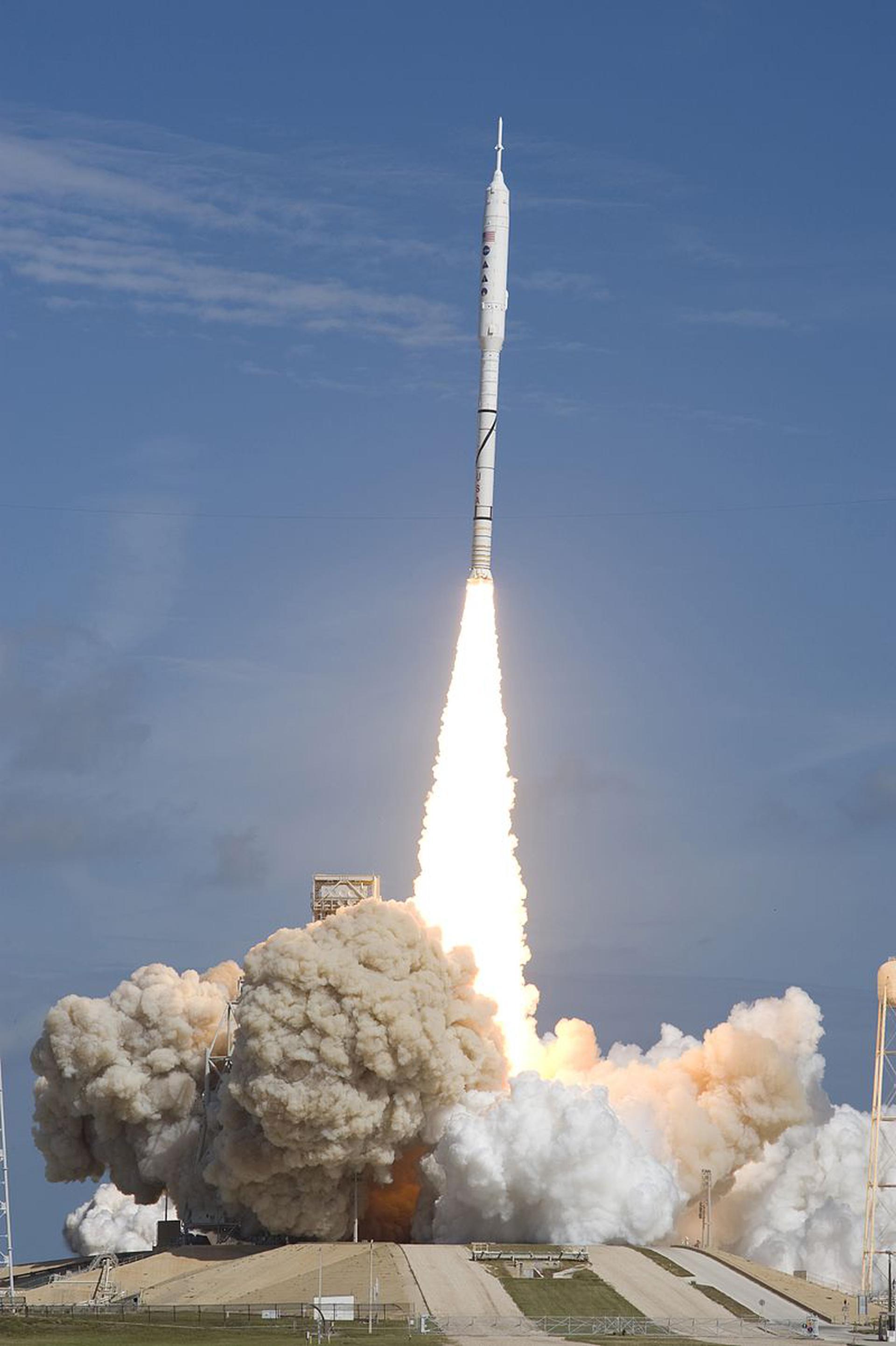
Ares I-X
In-activeNational Aeronautics and Space Administration (NASA)
Oct. 28, 2009
Description
Ares I was the crew launch vehicle that was being developed by NASA as part of the Constellation program. Ares I-X was a design concept demonstrator, that had a dummy second stage and a partially functional first stage.
Specifications
-
Stages
1 -
Length
99.7 m -
Diameter
3.71 m -
Fairing Diameter
― -
Launch Mass
816.0 T -
Thrust
12000.0 kN
Family
-
Name
Ares I-X -
Family
― -
Variant
I-X -
Alias
― -
Full Name
Ares I-X
Payload Capacity
-
Launch Cost
― -
Low Earth Orbit
― -
Geostationary Transfer
Orbit
― -
Direct Geostationary
― -
Sun-Synchronous Capacity
―
National Aeronautics and Space Administration
Government
Administrator: Jared Isaacman
NASA 1958The National Aeronautics and Space Administration is an independent agency of the executive branch of the United States federal government responsible for the civilian space program, as well as aeronautics and aerospace research. NASA have many launch facilities but most are inactive. The most commonly used pad will be LC-39B at Kennedy Space Center in Florida.
Ares I | Ares I-X
National Aeronautics and Space Administration | United States of AmericaKennedy Space Center, FL, USA
Sept. 28, 2009, 3:30 p.m.
Status: Launch Successful
Mission:
The Ares I-X vehicle used in the test flight was similar in shape, mass, and size to the planned configuration of later Ares I vehicles, but had largely dissimilar internal hardware consisting of only one powered stage. Ares I vehicles were intended to launch Orion crew exploration vehicles. Along with the Ares V launch system and the Altair lunar lander, Ares I and Orion were part of NASA's Constellation Program, which was developing the spacecraft for U.S. human spaceflight after the Space Shuttle fleet was retired.
SuborbitalFalcon 9
NROL-105
Space Launch Complex 4E - Vandenberg SFB, CA, USATwelfth batch of satellites for a reconnaissance satellite constellation built by SpaceX and Northrop Grumman for the National Reconnaissance Office …
Ceres-2
Demo Flight
Launch Area 95A - Jiuquan Satellite Launch Center, People's Republic of ChinaFirst test launch of Galactic Energy’s Ceres-2 rocket.
Long March 3B/E
Shijian 32
Launch Complex 2 (LC-2) - Xichang Satellite Launch Center, People's Republic of ChinaChinese experimental spacecraft of unknown purposes.
Ceres-1S
Tianqi 37-40
Rizhao offshore launch location - Haiyang Oriental Spaceport4 small satellites for LEO Internet of Things (IoT) communication purposes.
Long March 2C
AlSat 3A
Launch Area 94 (SLS-2 / 603) - Jiuquan Satellite Launch Center, People's Republic of ChinaEarth observation satellite built by China's CAST for the Algerian Space Agency.

